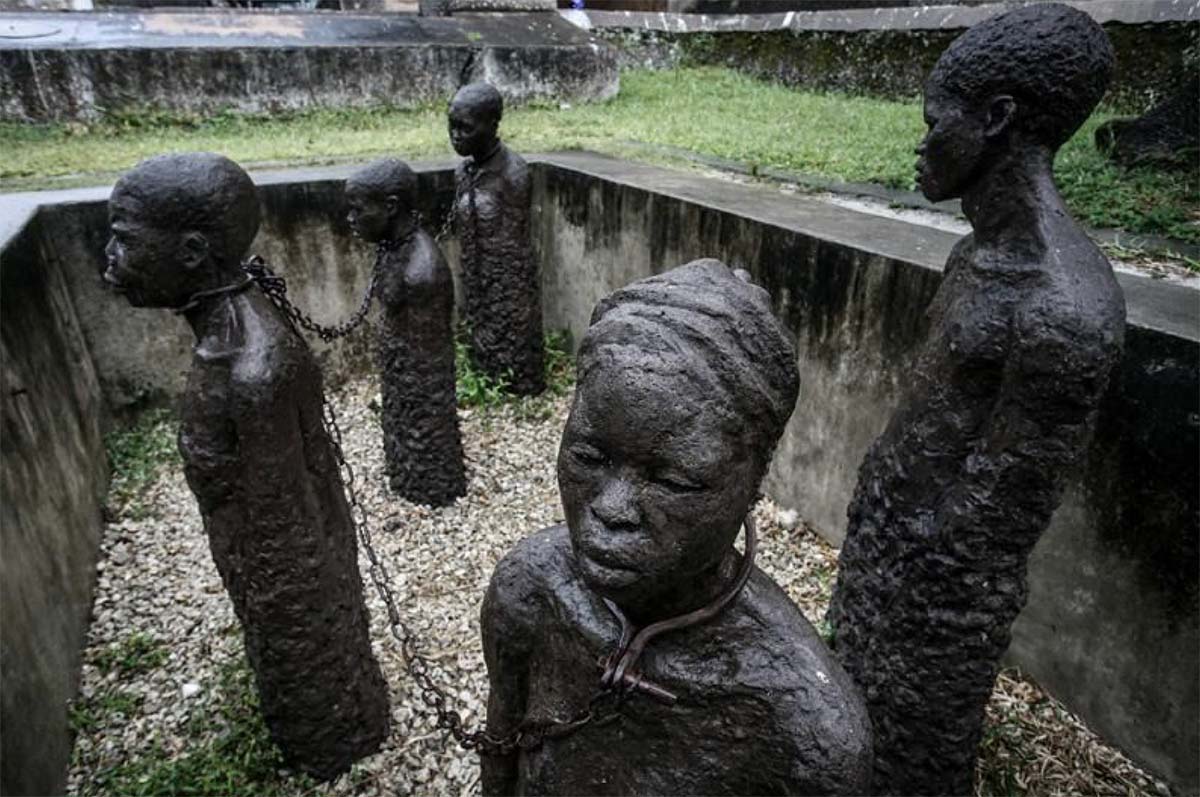
It is said that Tanzania is one of the last great places left on earth. The plains of the Serengeti stretch out before you and the majestic Mount Kilimanjaro rises like a beacon on the horizon. Tanzania’s climate certainly lends itself to the idealists’ dream of this country with sun-drenched days and cool nights, and for lovers of safari, there is nothing quite like it anywhere in the world. More than almost any other destination, Tanzania embodies the spirit of the safari, especially during its iconic Great Migration when millions of wildebeest, zebra, antelope, and other herbivores stampede across the Serengeti plains in search of greener pastures—the lions, cheetahs, and predators following in pursuit of a bountiful hunt. Yet while the Serengeti might be Tanzania’s most recognizable wildlife region, there is a wealth of natural treasures to be had throughout the country, whether it’s the sleepy crocodiles of Selous, the giraffes and ancient baobabs of Ruaha, the water birds of Rubondo Island, or the Big Five of Ngorongoro Crater. A Tanzania trip with Africa Pathways Expeditions is a once in a lifetime experience.
Tanzania is also defined by its varied cultures, with tribal influences playing a vital role in its essential flavor. There is nothing quite like joining in song and dance with the red-cloaked Maasai or embarking on a trekking expedition with the Hadzabe tribesmen, some of Africa’s last remaining full-time hunter-gatherers. The country as a whole enjoys a coveted level of peace and tranquility, making Tanzania a popular destination for visitors around the world in pursuit of spectacle and culture.
General Information
The United Republic of Tanzania is located in East Africa’s Great Lakes region. It is bordered by Kenya and Uganda in the north, Rwanda, Burundi, the Democratic Republic of Congo in the east, and Malawi, Mozambique, and Zambia in the south. At 947,303 square kilometres, Tanzania is the 13th largest country in Africa.
A combination of two former European administered colonies – Tanganyika and Zanzibar – Tanzania is an ethnically diverse country with more than 120 different ethnic groups.
Tanzania’s capital is Dodoma, although Dar Es Salaam is the country’s largest city, main commercial centre, largest port, and was the capital until 1996.
Tanzania also boasts both Africa’s highest point (Mount Kilimanjaro at 5,985m above sea level) and lowest point (Lake Tanganyika at 352m below sea level). Lake Tanganyika is one of three of Africa’s Great Lakes that lie wholly or partially within Tanzania’s borders – the others being Africa’s largest lake (Lake Victoria) and Lake Nyasa.
Population
Tanzania has a population of 49 million people, with 44.1% aged under 15. The majority of Tanzania’s population lives along the country’s northern border or it’s east coast. Population density varies from 12 per square kilometre in the Katavi region all the way up to 3,133 per square kilometre in the country’s most populous city, Dar Es Salaam (population 4.3 million).

Religion
Although the national census has not included religious data since 1967, religious leaders and sociologists estimate that Christianity accounts for 40%, and Islam 30%. The remainder of Tanzania’s population are practitioners of other faiths, including traditional African religions, or do not practice religion at all. The coast tends more towards Muslim beliefs, while the nation’s interior leans more towards Christianity. Christianity finds its roots in early missionaries from various churches including Roman Catholic, Protestant, and Lutheran.
In recent years, other religions such as Buddhism, Hinduism, and Baha’is have grown in popularity.
Language
Tanzania is the most linguistically diverse country in East Africa, with more than 100 different languages spoken. Of these, Swahili and English are Tanzania’s official languages.
While English is an official language, it lags behind Swahili in terms of widespread use. 90% of Tanzanians speak Swahili as a first or second language, with a local dialect being their other language. English is generally spoken fluently only by those who managed to complete secondary education.

History of Tanzania
Pre-Colonial Tanganyika and Zanzibar
Prior to the arrival of the first European colonial interests in 1498, Tanzania had already supported a dynamic mix of tribal peoples for thousands of years. Starting with the Hadzabe and Sandawe hunter-gatherers, the nation’s population swelled with two large movements of Southern Cushitic peoples from Ethiopia approximately 4,000 and 2,000 years ago. At around the same time, the Mashariki Bantu people from West Africa settled in the areas around Lake Tanganyika and Lake Victoria, bringing with them West African traditions such as iron-making and agriculture. The Masai, arguably Tanzania’s most famous tribal people, did not come to the area from South Sudan until somewhere between the last 1,500 and 500 years.
Since around the 9th Century AD, trade vessels from the Middle East had been making use of the Indian Ocean coast. It is for this reason that Swahili bears some resemblance to the Arabic tongue, and why Islam is practised among most coastal people.

Colonial Zanzibar and Tanganyika
Portuguese explorer Vasco da Gama visited the Tanganyika coast in 1498, and the Portuguese took control of the region in 1506. They would rule until 1699, when they were ousted from power by the Omani Sultanate.
Omani Sultan Seyyid Said claimed the Zanzibar archipelago and the Tanganyikan coast and even relocated his capital to Zanzibar City (more commonly known as Stone Town). Zanzibar soon became the centre of the Arab slave trade, with 65-90% of the region’s native population enslaved. Many buildings from this time remain today, and it is possible for visitors to Stone Town to visit the former palace as well as the former slave markets.
The lucrative slave trade would come to an end in the 1800s, with the British Empire placing increasing pressure on Sultan Said to end the slave trade. Blockades and sanctions eventually had the desired result, and in 1876 the Anglo-Zanzibari Treaty brought an end to Zanzibar’s role as a slave port. A few years later in 1890, the archipelago would join the British Commonwealth as an Omani administered British protectorate. Tension between the Sultans and the British would remain until 1896 when, in the shortest war ever, the Sultanate rebelled for all of 38 minutes before being bombarded into submission.
In the latter stages of the 19th century, Germany conquered the Tanzanian mainland and named it German East Africa. This leadership would last only until the conclusion of the First World War, at which time Tanganyika was handed over to the British Commonwealth. Over 100,000 Tanganyikan soldiers would fight for the Allies in World War II, and Tanganyika would become an important ‘bread basket’ for a Commonwealth running desperately short on food and supplies.
Post-Colonial Tanzania
In the decades following the conclusion of World War II, the British Commonwealth gradually wound back its colonial claims. Like many other nations, Tanganyika became an independent member of the Commonwealth in 1961, electing its first president in 1962.
At around the same time, the Zanzibar Revolution brought to an end over 200 years of Arab dominion of the archipelago. The newly independent Zanzibar aligned itself with Tanganyika in 1964, and the two nations adopted a portmanteau of the two names to create a new name for their unified nation: Tanzania. In 1967, Tanzania’s most influential political document, the Arusha Declaration would codify the new nation’s political beliefs. It remains the most significant political document in the nation’s history.








